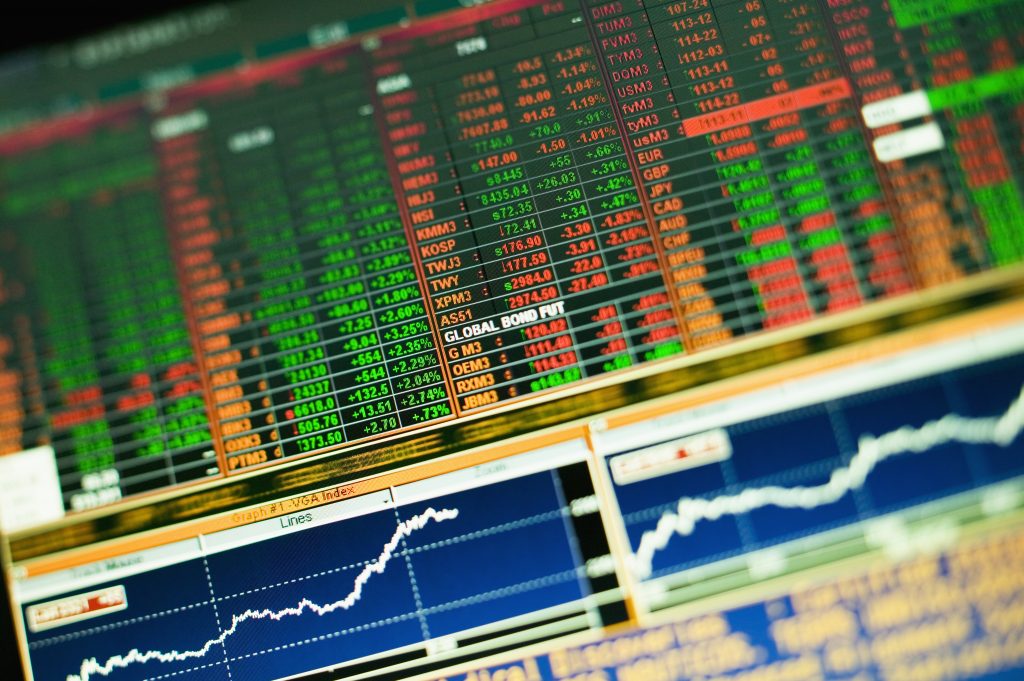How to Trade Options Skew
Skew exists in the options market due to the fear of a market correction, which means put prices are naturally higher than call prices

In the options world, one key concept that all investors and traders need to be aware of is skew, which helps describe why puts are generally more expensive than calls—all else being equal.
Skew exists because many market participants live in fear of a crash in prices. As a result, there are natural buyers of downside puts (i.e. insurance), which contributes to inflation in the premiums of those options.
Upside calls, on the other hand, are relatively less expensive because there are natural sellers of these options, particularly sellers trying to increase returns using the covered call strategy—a method of reducing cost basis.
If skew is normal, that means the puts in a given underlying will trade at a slightly higher implied volatility than the calls, when looking at options with comparable delta.
Practically speaking, that means if one sees the 20% out-the-money (OTM) call trading for a lower absolute implied volatility than the 20% OTM put, it’s not necessarily a cheaper option. Instead, that is likely skew at work.
While it’s important to be aware of skew, the degree to which an investor or trader utilizes this metric can vary by a wide margin.
Strategies that rely heavily on quantitative engineering often track skew over time, and may use skew as an input when forecasting future volatility. This type of approach attempts to account for fluctuations in skew and is included in a pricing analysis when evaluating whether a given option is cheap, fair or expensive.
For example, if skew is at a historical extreme, that may provide a trader with additional context on the relative attractiveness of a potential opportunity.
It’s important to note that steep skew may exist for a reason. For example, a company at risk of default or bankruptcy may trade with steep skew, meaning the puts associated with this underlying may be significantly more expensive than the calls.
Importantly, skew can also be reversed. Reverse skew is typically observed when the market perceives more risk to the upside in a particular underlying/asset, as compared to the downside.
For example, in the case of a potential takeover, the call options associated with that company may trade at a much richer premium than the puts. Such situations may also be referred to as inverse skew or forward skew.
Some options markets are consistently biased toward reverse skew.
For example, gold prices are often viewed as more likely to “crash up” because gold typically gets a strong bid when other parts of the financial markets are crashing.
To visualize this scenario, imagine global equity markets are in correction mode, based on concerns over the underlying economy. In that case, traders may adopt a strong conviction that gold prices could rise in the near future, and consequently bid up premiums in the calls of gold-related names.
This is an example of reverse skew. Many options markets with gold-specific exposure (i.e. gold mining companies, gold ETFs and gold futures options) frequently trade in this fashion.
Trading skew
The degree to which an investor or trader utilizes skew can vary widely in the options market.
Advanced strategies that rely on quantitative engineering often factor skew into their volatility forecast. Identifying historical extremes in skew can help investors and traders further evaluate potential opportunities.
On the other hand, many investors and traders simply use a general awareness of skew to help avoid making mistakes in the market. For example, when a company’s puts are priced significantly higher than a company’s calls (more so than usual), that could be an indicator that the risk of bankruptcy or default is especially high.
Under the reverse scenario—when the calls are priced significantly higher than the puts—that may be an indication that the company in question is likely to be taken over. In such cases, market participants may think twice about selling calls in the associated underlying, due to the increased risk that the underlying could make an unexpected, and significant, move to the upside.
Skew is therefore just another important data point that investors and traders can use when evaluating potential options trades. To track skew in the broader market, investors and traders can also monitor the Skew Index.
The CBOE Skew Index (SKEW) is calculated using out-the-money (OTM) options in the S&P 500. The Skew Index typically rises when downside put buying activity intensifies, signaling a growing expectation for a big downside move in the market. As a result, the Skew Index is typically viewed as a barometer of tail risk in the stock market.
Tail risk in the financial market refers to a form of portfolio risk that captures the remote probability that the value of a given investment could move by more than three standard deviations from its current value (i.e. a significant unexpected move).
Interpretation of the Skew Index is relatively straightforward. Traditionally, the Skew Index trades between 100 and 170, as shown in the chart below.
A lower reading in the Skew Index (100-120) generally translates to a relatively complacent risk environment, whereas an elevated reading in the Skew Index (140 and above) indicates that expectations for a big move in the market are rising/peaking.
According to research conducted by tastylive, the Skew Index can’t necessarily be relied on to accurately predict a forthcoming stock market correction. However, it can serve as an indicator of the prevailing sentiment in the stock market.
As of press time, the Skew Index is trading about 122. The 52-week low in the Skew Index is roughly 110, while the 52-week high is 146.
To learn more about the predictive value of the Skew Index, check out this episode of Options Jive on the tastylive network. To learn more about trading skew in the options markets, tune into this installment of Options Trading Concepts Live.
To follow everything moving the markets on a daily basis, monitor tastylive, weekdays from 7 a.m. to 4 p.m. CDT.
Sage Anderson is a pseudonym. He’s an experienced trader of equity derivatives and has managed volatility-based portfolios as a former prop trading firm employee. He’s not an employee of Luckbox, tastylive or any affiliated companies. Readers can direct questions about this blog or other trading-related subjects, to support@luckboxmagazine.com.




















